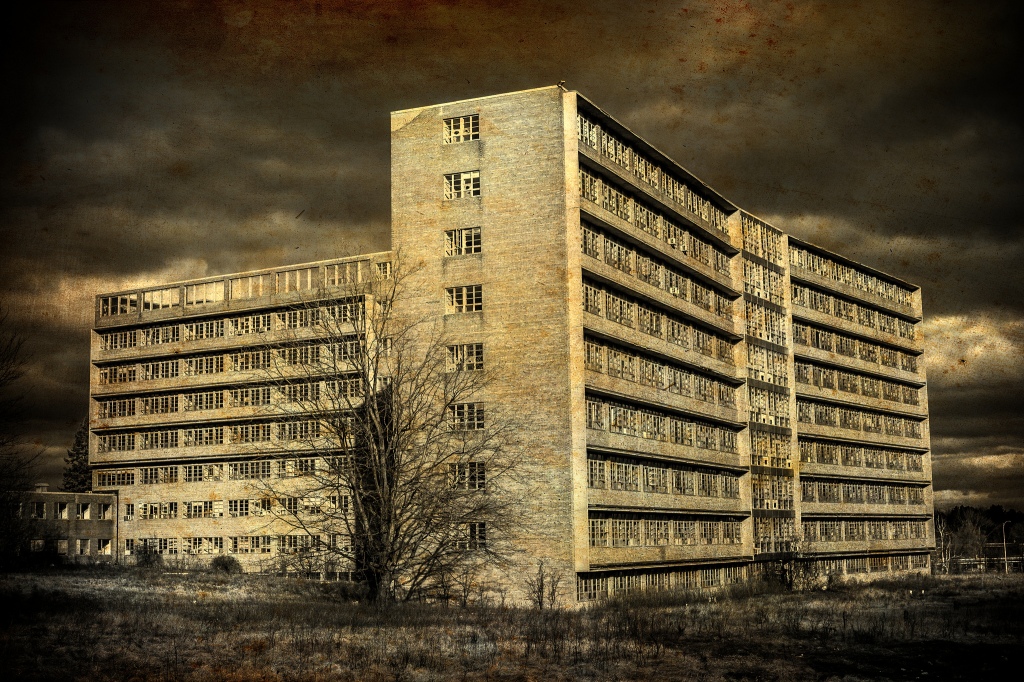Hidden deep within the shadows of forgotten landscapes lie abandoned asylums, once bustling with activity and filled with stories of hope, despair, and mystery. These forgotten sanctuaries stand as eerie reminders of a bygone era in mental healthcare. Urban explorers and enthusiasts who seek adventure and a glimpse into the past are drawn to these decaying structures, captivated by their haunting beauty.
Exploring abandoned asylums offers an opportunity to step back in time and witness the evolution of mental health treatment. These institutions were established during a time when understanding mental illness was limited, resulting in unorthodox and often controversial methods. Today, these asylums serve as historical relics that shed light on the progress made in psychiatric care.
One such asylum that has captured the curiosity of urban explorers is Danvers State Hospital located in Massachusetts, USA. Initially opened in 1874 under the name “State Lunatic Asylum at Danvers,” it housed thousands of patients throughout its existence until its closure in 1992. Designed by renowned architect Nathaniel Jeremiah Bradlee, this massive Gothic-style structure stood tall atop Hathorne Hill overlooking picturesque landscapes.
The asylum’s architecture reflected the prevailing belief that aesthetics played a crucial role in patient recovery. With its grand archways, ornate detailing, and sweeping staircases leading to sunlit rooms, Danvers State Hospital aimed to provide tranquility amidst chaos for its inhabitants.
However, over time it became apparent that many psychiatric institutions fell short on delivering adequate care for patients. Reports emerged exposing overcrowding, neglectful conditions, and questionable treatments such as electroconvulsive therapy (ECT) or lobotomies. This dark chapter in mental health history haunts these forgotten halls even today.
Another asylum steeped in mystery is Hellingly Hospital located near East Sussex County Asylum Road in England. Opened in 1903 under the name “East Sussex County Asylum,” Hellingly Hospital aimed to provide a compassionate and humane environment for patients. However, like many institutions of its time, it eventually became overwhelmed by the sheer number of patients.
The hospital’s vast complex consisted of numerous buildings, including an administration block, wards, recreation halls, and even a mortuary. The expansive grounds allowed patients to engage in therapeutic activities such as gardening or outdoor sports. Yet despite these efforts, stories of neglect and mistreatment within its walls have surfaced over the years.
Exploring these forgotten asylums is not without risks. Dilapidated structures pose physical hazards like collapsing ceilings or unstable floors. Additionally, trespassing on private property is illegal in most cases and can result in serious consequences. Therefore, it is essential to approach urban exploration responsibly with respect for the historical significance of these sites.
When visiting abandoned asylums, it’s important to remember that behind each crumbling wall lies countless untold stories. These places were once inhabited by individuals who experienced tremendous suffering but also moments of joy and resilience. It is crucial to approach their history with empathy rather than sensationalism.
Urban exploration offers us a chance to reflect on our society’s progress in mental health treatment while paying homage to those who endured hardships within these walls. As we immerse ourselves in the eerie ambiance of forgotten asylums, we gain a deeper appreciation for how far we have come while acknowledging the work that still needs to be done.
In conclusion, exploring forgotten asylums allows us to peer into the past and understand the evolution of mental healthcare better. These decaying structures hold tales both tragic and inspiring from an era when psychiatric treatment was shrouded in mystery and controversy. By approaching urban exploration responsibly and respectfully honoring those who lived within these walls, we can learn from history while advocating for progress in modern-day mental health care systems

Leave a comment